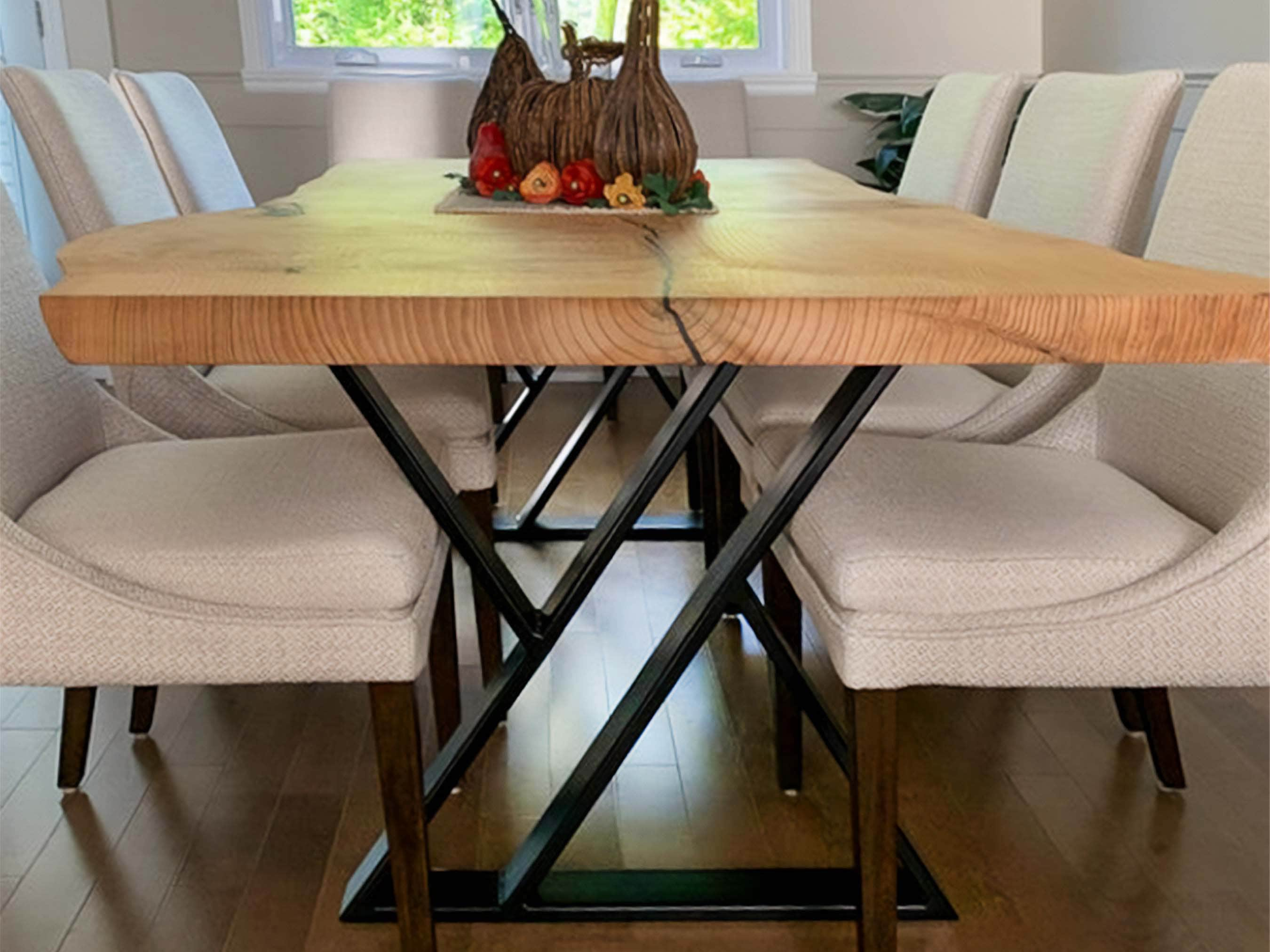Dining Room Table Legs That Combine Performance and Modern Style
Dining Room Table Legs That Combine Performance and Modern Style
Blog Article
A Comprehensive Appearance at Table Leg Styles: Locating the Perfect Suit
Selecting the ideal table leg design is crucial for both visual appeal and useful performance. Typical 4 legs supply timeless style and stability, while the pedestal base gives enhanced legroom and a modern appearance. For those with bigger tables, trestle legs make certain strong assistance, whereas barrette legs present a mid-century contemporary vibe with their minimalist style. The x-shaped legs mix contemporary design with improved stability. Each of these alternatives brings one-of-a-kind advantages, making the selection greater than just a matter of choice. Discover better to discover which style completely enhances your eating room and way of life.
Traditional 4 Legs
Amongst the different kinds of table leg designs, the typical four-leg design remains an ageless choice for several houses. This classic configuration uses a harmonious blend of capability and visual appeals, making it a perennial favorite. Four legs give balanced support, making sure the table continues to be steady and efficient in bearing substantial weight. This is specifically helpful for households that often hold big events or use their table for several functions, such as job or crafting.
From an aesthetic point of view, the traditional four-leg style can be quickly adjusted to different indoor designs. Whether crafted from timber, metal, or a mix of materials, these legs can be elaborately carved, sleek and minimalistic, or anything in between. Their versatility allows them to complement both rustic and modern settings seamlessly.
Moreover, the uncomplicated framework of the four-leg design assists in simplicity of activity and placement within an area. Unlike even more complex bases, this style lessens obstructions, offering sufficient legroom for restaurants. In recap, the standard four-leg table leg style marries withstanding style with useful performance, making it a sharp option for those seeking both form and function in their eating furnishings.
Pedestal Base
Often commemorated for its sophisticated and space-efficient style, the stand base is a prominent choice to the typical four-leg configuration in eating table leg styles. This distinctive base normally includes a single central column sustaining the tabletop, which can differ in form, from ornately carved timber to sleek, modern-day metal. One of the key benefits of the stand base is its capacity to make best use of legroom and seating versatility. Without edge legs, restaurants are afforded higher freedom of activity, making it a suitable selection for round and oval tables that promote even more intimate and comprehensive celebrations.
The main column itself uses a canvas for detailed layouts and artistic expressions, including an element of visual passion under the table. In recap, the stand base combines capability with style, making it a fine-tuned and sensible alternative for varied eating environments.
Trestle Legs
Trestle legs provide a durable and classic foundation for dining tables, characterized by their horizontal cross-bracing and durable support light beams. Stemming from medieval times, this layout has progressed yet kept its necessary framework, making it a seasonal fave in both typical published here and contemporary setups. The main trestle beam, typically sustained by 2 or more vertical messages, provides extraordinary stability, permitting larger table sizes without the demand for extra legs.
A considerable advantage of trestle leg tables is the ample legroom they supply. Unlike tables with 4 corner legs, the lack of blockages at the table's sides supplies unimpeded space for chairs and diners, enhancing convenience and ease of access. This makes trestle tables perfect for accommodating larger celebrations, whether in a dining area or a reception hall.
From rustic farmhouse to smooth modern-day styles, trestle legs can be customized to suit specific tastes. Their enduring allure and useful benefits make trestle legs a compelling selection for those looking for both design and usefulness in their eating table.
Barrette Legs

The allure of hairpin legs depends on their simplicity and versatility - dining room table legs. Offered in a variety of materials, consisting of steel and brass, they can be finished in many colors to enhance different interior designs. Whether coupled with a rustic wood tabletop or a modern glass surface area, hairpin legs easily blend capability with a touch of classic charm
Toughness is an additional significant function of barrette legs. Regardless of their fragile look, these legs are crafted to birth substantial weight, guaranteeing the eating table remains stable and secure. Additionally, they are relatively simple to mount, making them a popular selection for do it yourself lovers and professional furniture makers alike.
X-Shaped Legs

Constructed from products such as steel, wood, or a combination of both, X-shaped legs can be customized to match different layout choices. Steel legs commonly lend a streamlined read review and commercial feel, suitable for loft-style houses and contemporary eating spaces. On the various other hand, wooden X-shaped legs provide a warmer, more rustic appeal, appropriate for farmhouse or eclectic interiors. The adaptability in products permits property owners to customize their eating tables to better fit their general design scheme.
Furthermore, the engineering behind X-shaped legs ensures also weight circulation, reducing the threat of wobbling and boosting resilience. This makes them particularly well-suited for larger eating tables that require added websites assistance. Basically, X-shaped legs blend useful design with modern-day visual appeals, making them a classic choice for diverse eating atmospheres.
Verdict
A detailed understanding of dining table leg styles discloses the unique features and advantages of each layout. Standard four legs provide security and classic allure, while pedestal bases give legroom and a structured look. Trestle legs ensure durable assistance for bigger tables, and barrette legs present a mid-century contemporary aesthetic. X-shaped legs incorporate modern design with improved security. Selecting the suitable leg design ensures both practical and visual complete satisfaction in any kind of eating space.
Report this page